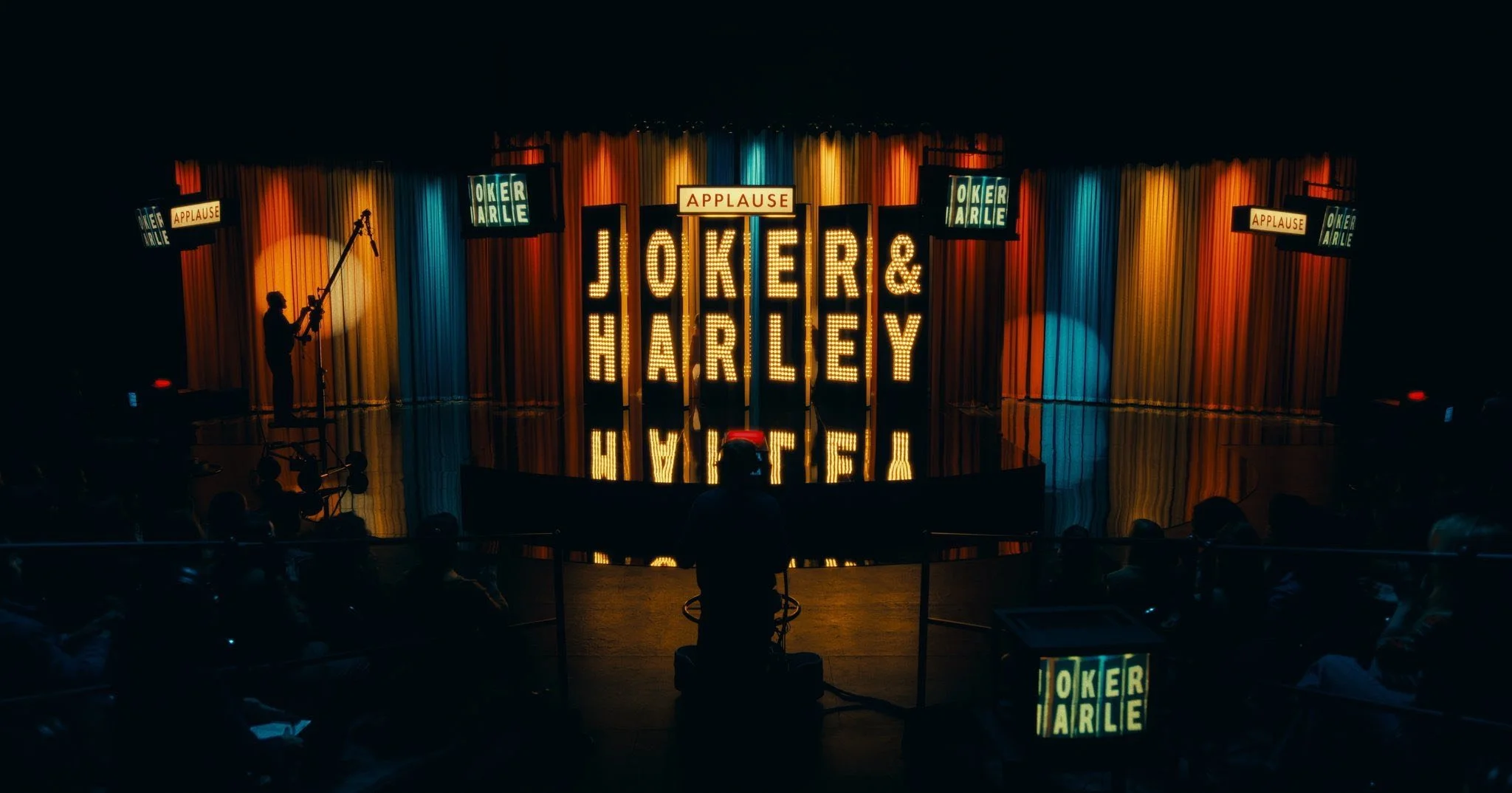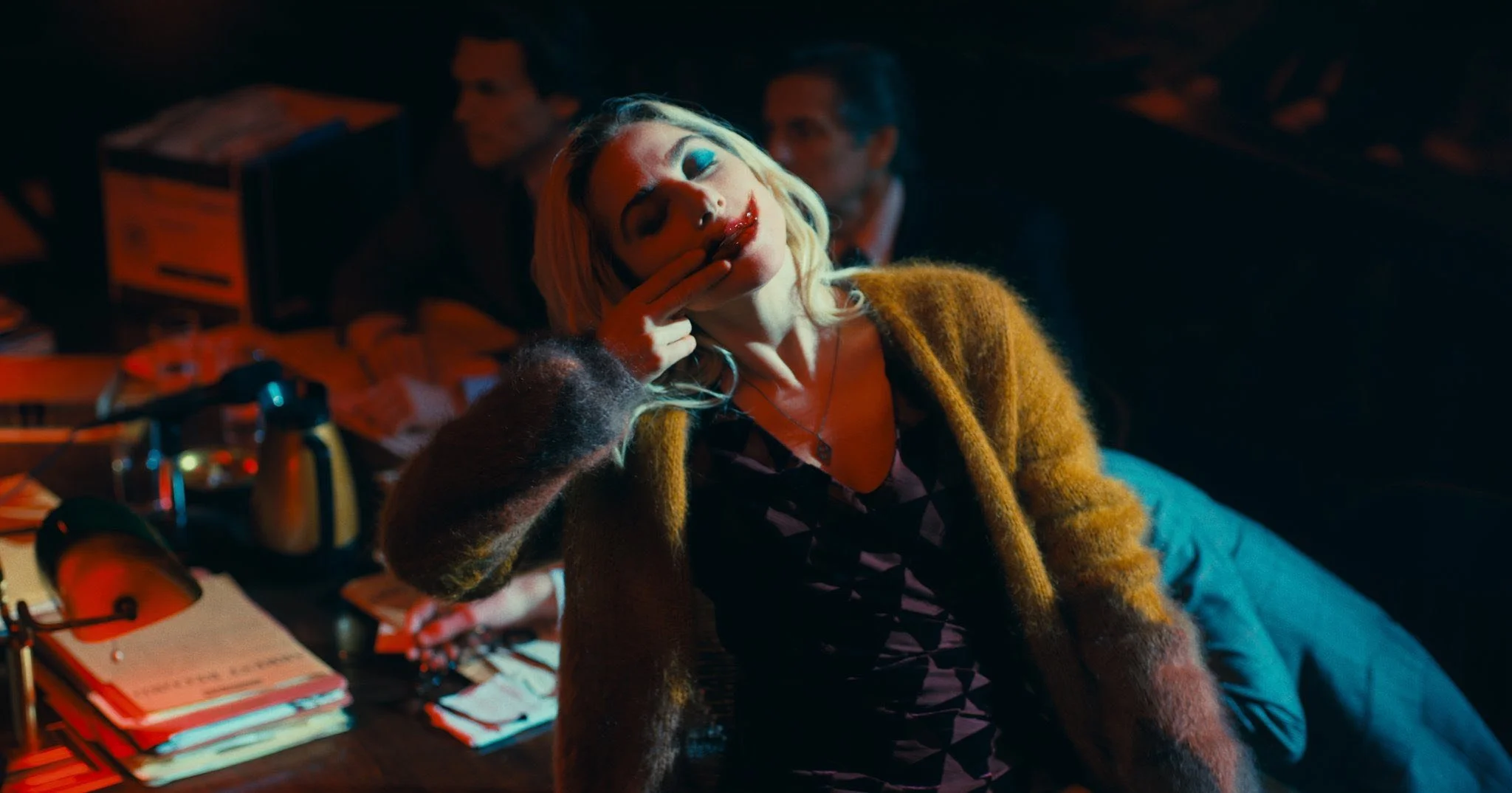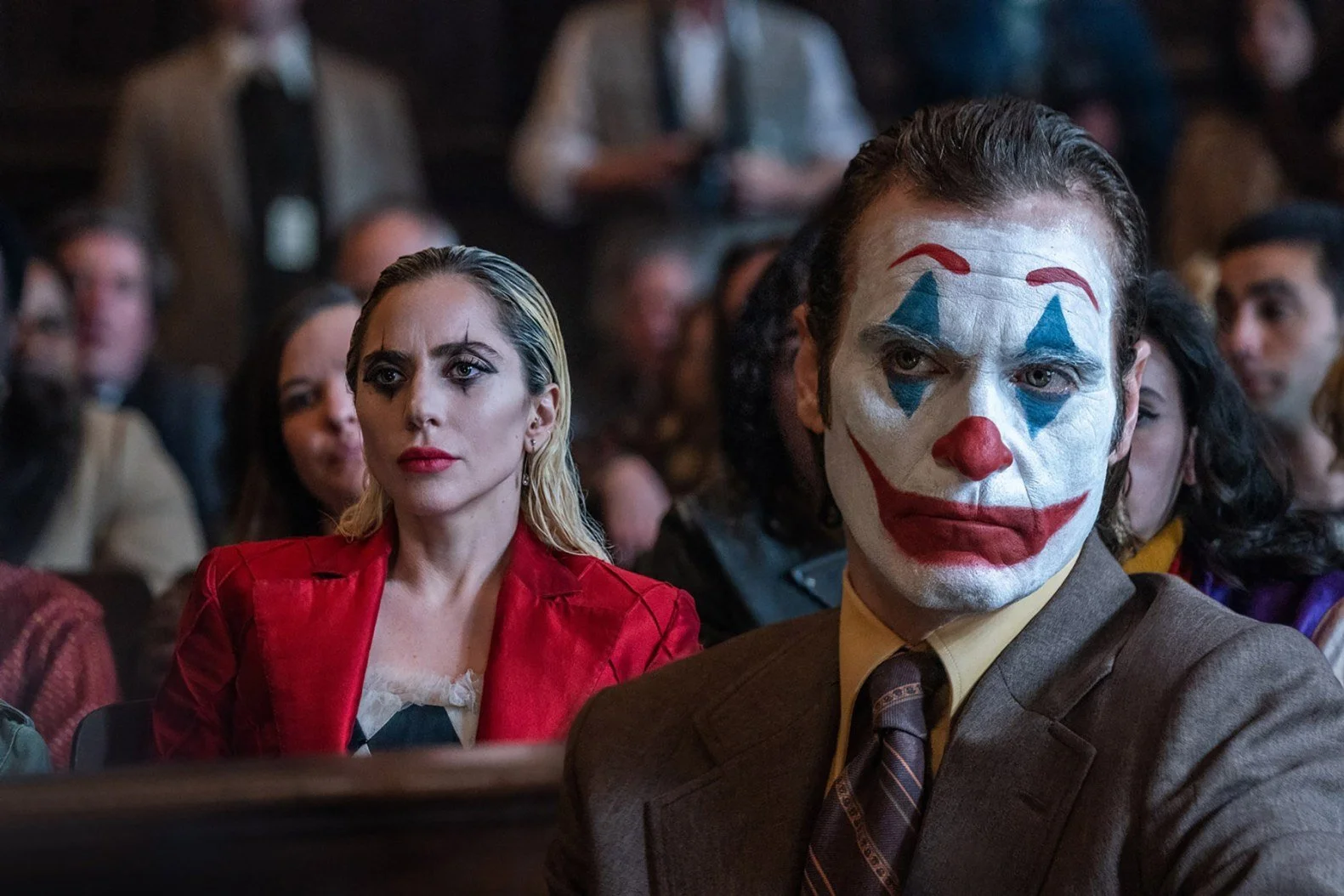Joker: Folie à Deux Review
The musical, as a cinematic form, is so unpopular with audiences that most studios intentionally avoid using it in their films. Looking at the promos for Joker: Folie à Deux, it's unclear whether Todd Phillips' sequel to his 2019 global smash is a full-fledged song-and-dance spectacular.
Joker: Folie à Deux begins shortly after the original ends. Arthur Fleck (Joaquin Phoenix), better known as the Joker, is imprisoned in Arkham Hospital's secured wing. Fleck, dreadfully emaciated with scapulae protruding like broken wings from his back, shuffles from cell to recreation yard to community room, receiving cigarettes from guards in exchange for delivering jokes. He isn't bothering anyone, so he is allowed to participate in group singing therapy, where he meets and falls hopelessly in love with fellow patient Harley Quinn (Lady Gaga).
Arthur’s exuberant musical numbers, flights of melodic fancy that play out the visions in his head and heart, represent the genre’s potential in finding freedom from capturing reality as it happens in favor of an experience as it feels.
Phillips has delved predominantly into songbooks of the 1950s and 1960s to dig out some classic tunes: Frank Sinatra’s That’s Life; Barbra Streisand’s Bewitched, Bothered and Bewildered; and Stevie Wonder’s For Once In My Life are just a handful of great songs performed by the couple at various points throughout the film. However, rather than directing the audience's attention to events or emotions, the song conveyor belt just drags down the proceedings.
Unfortunately, each time the picture appears to be about to break free from its own cage and reintroduce the Joker and Harley to the rough streets of Gotham City, the characters and story return to the prison cell or courtroom.
Phoenix and Gaga make a truly electric pair, but as the courtroom scenes drag on its not hard to side with Lee’s impatience at the strategy in play. What begins as a relevant comment on the blurring of realities descends into a self indulgence that seems to find Phillips still taking on critics of his first Joker film.
Phillips surrounds the terrific ensemble with several well-staged set pieces, but the ambition of this new vision soon finds itself battling curiosity and tedium.
The attractiveness of the film's gambit fades as the film goes. It's a relief that Phillips broadens his horizons beyond the early Scorsese cosplay in Joker, but a single creative notion cannot always carry an entire film.
As Folie à Deux progresses, this instrument grows to resemble a sledgehammer. It's an excellent reminder of why villains typically have one-film arcs in comic book films; there's only so much juice a writer can extract from them. This heightened stylistic verve helps Joaquin Phoenix's Joker last longer, but by the end, this iteration feels weary. Lady Gaga's Harley Quinn has a lot of potential as the newcomer to this gritty Gotham, but she's too often pushed to the background. If there was anyone who could have expanded the film's vocal range, it was her.





